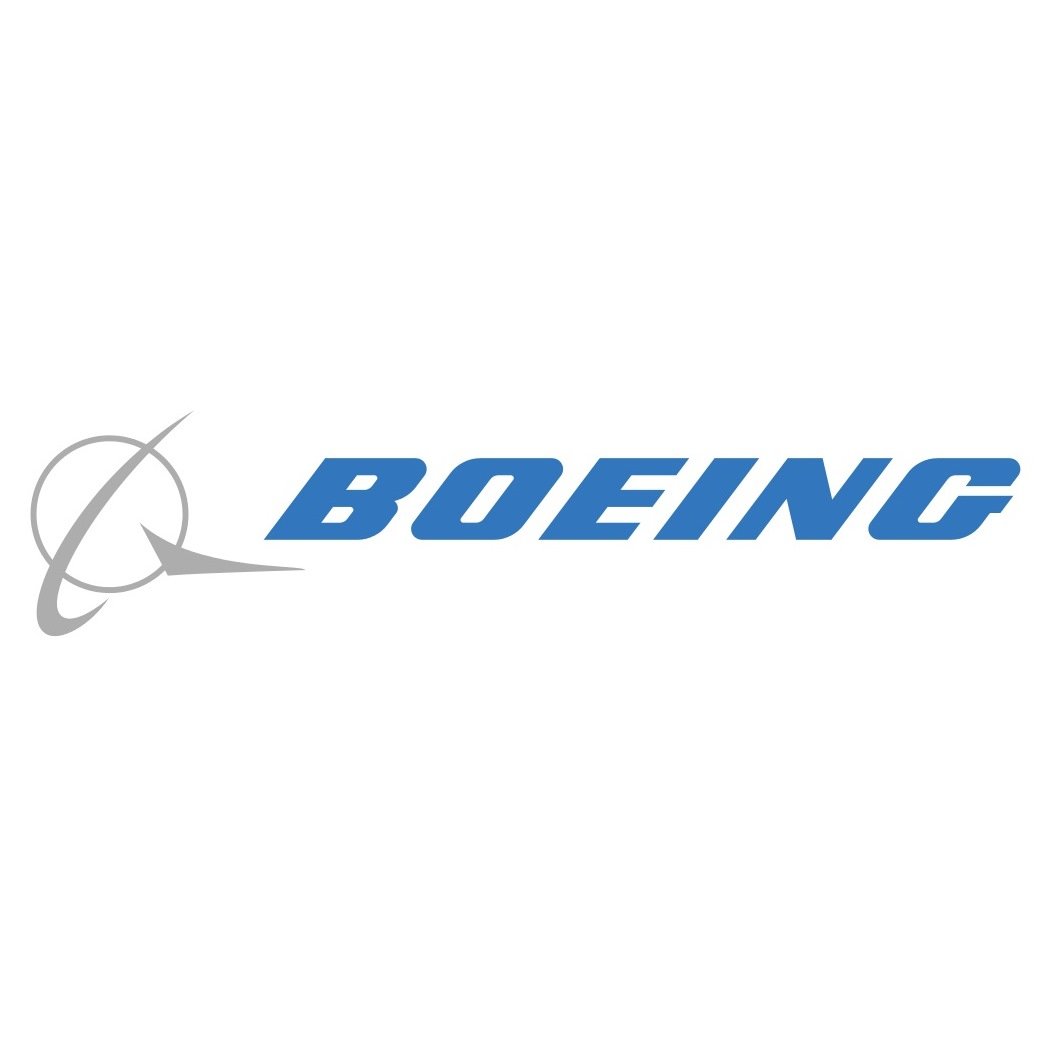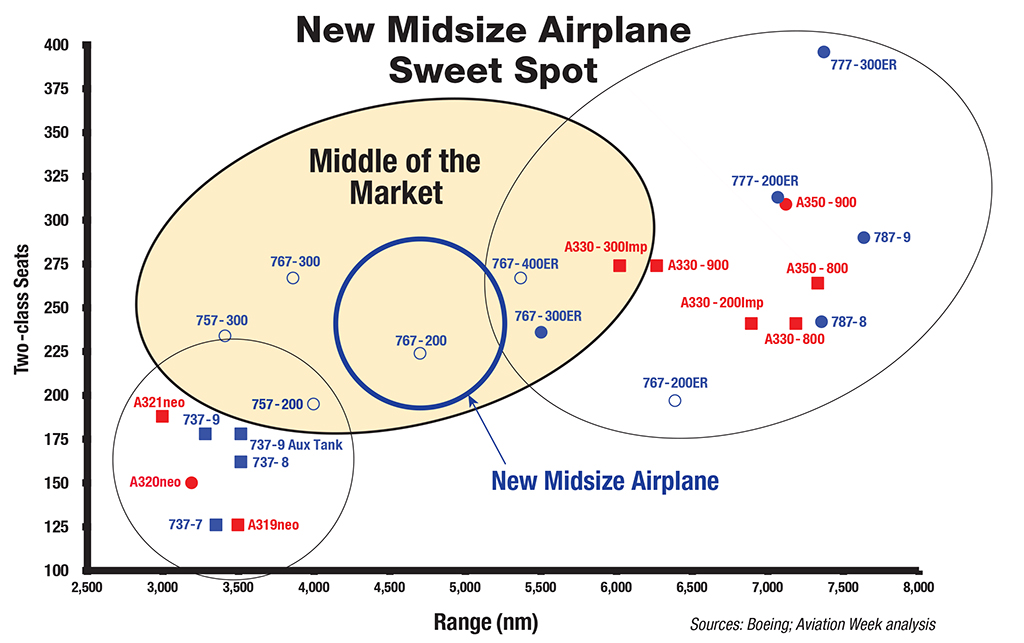

If reading this strikes you as deja vu all over again, that might be exactly what it is. Boeing Co. (NYSE: BA) reportedly has been showing potential customers two designs for a stretch version of its new and yet-to-be-delivered 737 MAX 9 to compete with the Airbus A321neo and A321LR.
This is not the first time since Airbus announced the A321LR nearly two years ago that Boeing has responded with a stretched version of its new 737. The company has also suggested a clean-sheet design, but that would delay first deliveries until at least 2024. Airbus expects to deliver its first A321neo in 2018 and the LR version by 2019.
At stake here is the so-called middle-of-the-market (MoM), a space for which Airbus claims at least 1,000 new dual-engine, single-aisle planes are needed to fly long, thin routes (up to 5,000 nautical miles with 200 to 260 passengers). The A321LR in a basic configuration can fly 206 passengers about 4,000 nautical miles. The new airplane replaces the Boeing 757, which went out of production in 2005.
Boeing cannot seem to come up with an answer. At first the company denied the market was as large as Airbus said it was. Then it considered reconfiguring the 767, a dual-engine, twin-aisle plane that is still available from the company as either a passenger jet at a list price of $197.1 million or a freighter costing $199.3 million.
The 767 is also the base for the company’s new Air Force tanker, the KC-46A. Boeing’s September order book shows a new order for 19 767s to be fitted out as new tankers.
The following chart from Boeing and Aviation Week magazine shows where Boeing thinks the MoM plane fits. Boeing now believes that between 2,000 and 5,000 planes could be required to replace both the aging 757s and 767s.

If Boeing is right about the sweet spot, then most customers want to fly 4,800 to 5,000 nautical miles. That’s significantly longer than the 757’s range, and the 767-300 seats between 260 and 300 passengers, more than customers appear to require. The perfect MoM plane, it seems, is a little bit bigger than a current single-aisle but not quite as big as a 767, and with a longer range.
Which apparently has brought Boeing back to a stretched 737 MAX 9 that has been called the 737 MAX 10. The problem with a stretched MAX 9 is that it would need new, larger engines that would, in turn, require Boeing to change the landing gear to accommodate the larger engine fans.
Bloomberg reported that CFM International, the joint venture between the General Electric Co. (NYSE: GE) and France’s Safran that builds the LEAP-1B engine for the 737 MAX, has “gained confidence that [CFM] can reap enough extra thrust from the existing LEAP-1B engines to speed to market a new, longer variant with relatively uncomplicated landing gear.” CFM declined to comment.
Boeing apparently also is considering CFM’s LEAP-1A engines for the stretched MAX 9 that would require only “some modifications to the wing and tail, and taller landing gear that would mechanically shrink to fit into the same wheel well used on other 737s.”
The biggest issue is timing. Can Boeing deliver a competitor to the A321LR close to the 2019 first delivery date for the Airbus plane? The Bloomberg report indicates that the company has projected a tentative date of 2021, but at least one potential customer, Air Lease Corp. (NYSE: AL), says “that’s just too late.”
While this whole story has the ring of a melodrama (“Can Dudley Do-Right rescue Little Nell from the railroad tracks in time?”), it’s pretty serious business. A total of, say, 2,000 planes at a list price of around $200 million each is real money.
Take This Retirement Quiz To Get Matched With A Financial Advisor (Sponsored)
Take the quiz below to get matched with a financial advisor today.
Each advisor has been vetted by SmartAsset and is held to a fiduciary standard to act in your best interests.
Here’s how it works:
1. Answer SmartAsset advisor match quiz
2. Review your pre-screened matches at your leisure. Check out the
advisors’ profiles.
3. Speak with advisors at no cost to you. Have an introductory call on the phone or introduction in person and choose whom to work with in the future
Take the retirement quiz right here.
Thank you for reading! Have some feedback for us?
Contact the 24/7 Wall St. editorial team.
